Spring Ahoy!
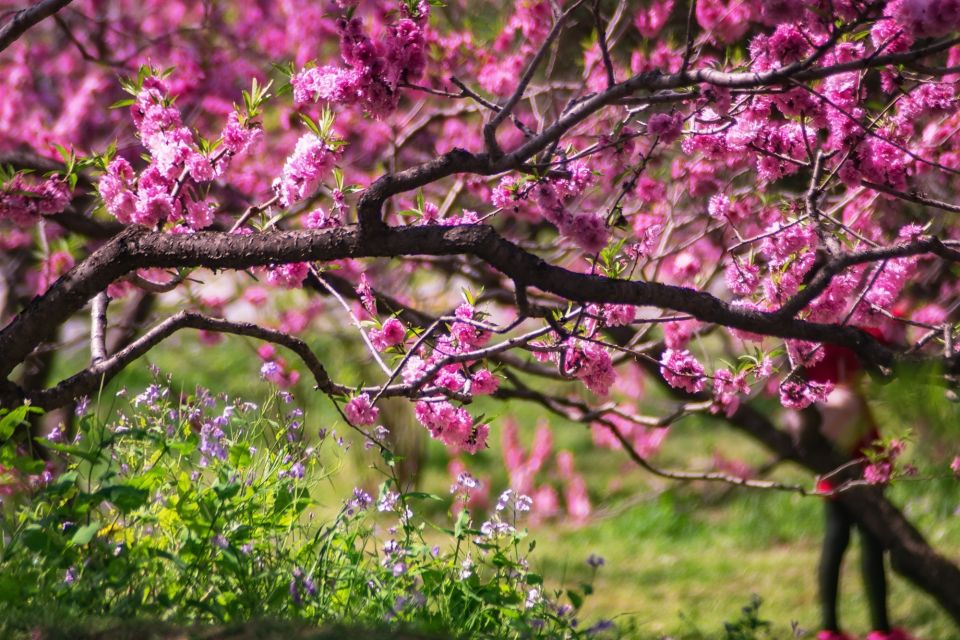
It may feel frustrating to be in lockdown for this most beautiful and exciting of seasons, but we can still enjoy the delights that spring offers while sticking to lockdown measures. It’s time to turn detective and practice your observation skills.
The days are getting longer and milder and trees everywhere are unfurling their most delicate shades of green. Birds are getting louder and more frantic in their efforts to find mates and hatch the next generation. All of nature is springing forth with renewed vigour and brightness. Even the British weather is smiling its benevolence and sadly us humans are stuck mostly indoors during lockdown.
But before we get into that, let’s appreciate the miracle of why exactly spring springs up every year? It might seem a bit obvious, it’s the time of year when there’s more daylight and the temperature starts to warm up. This makes spring burst into life. Plants growing at an exponential rate and animals reproducing like Duracell bunnies. The cycle of life gears up and in tree terms the sap rises.
But why? Just as winter is created by the earth tilting away from the sun, for us the season of spring is where the earth’s axis is moving from pointing away from the sun and towards it instead. Spring is that point in between when Earth's axis is not pointed towards or away from the sun.
There are two official starting points of spring, the astronomical and meteorological. Astronomical seasons are all about the earth’s axis and the position of Earth's orbit in relation to the Sun. This is due to the 23.5 degrees of tilt of the Earth's rotational axis as it orbits around the Sun. This means the seasons vary in length slightly, the start date of a new season can fall on different days each year. This year, astronomical spring began on 20 March 2020 and will end on 20 June 2020.
The meteorological approach is to divide the seasons into four equal periods made up of three months, these are based on the annual temperature cycle. These seasons are split to coincide with our Gregorian calendar, making it easier for meteorological observing and forecasting to compare seasonal and monthly statistics. According to the meteorological calendar, spring will always start on 1 March and end on 31 May.
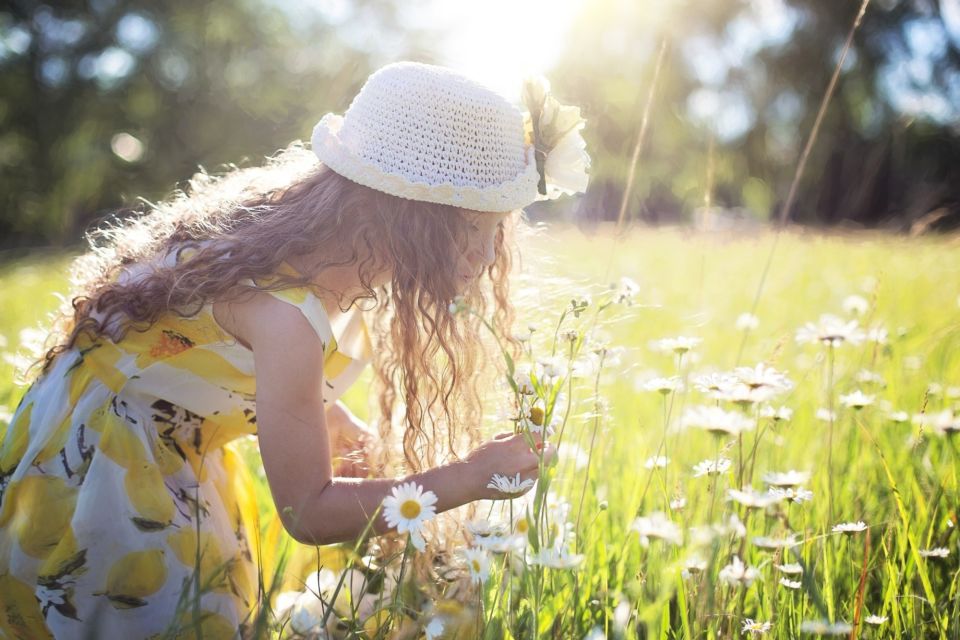
Trees in spring
So back to the sap rising, you may have heard of the phrase before but what is it all about? Sap is liquid that trees use to transport minerals and nutrients up and down from the ground through the tree and right up to the leaves. It travels through long tube-like structures known as xylem and phloem. Trees that lose their leaves in the winter, deciduous trees, become dormant until spring to cope with winter. To prepare for this in autumn they move sugars from the leaves to the roots where they are stored. Over winter, so long as temperatures are below freezing the tree takes on water from the surrounding area and then the tree sleeps and waits. When the weather starts to warm up, the sap, fuelled by the large amount of stored water starts to rise up the tree, taking the stored sugars from the roots to the branches and twigs where it’s needed to grow its new set of leaves. This rising of sap can carry on for weeks until the water pressure evens out to lower summer levels.
If a tree is pruned or damaged during this time sap will ooze from the wound and so it’s best not to prune trees in spring. If you see a damaged tree bleeding sap, the best thing is to leave it alone as just like humans it will heal itself and interfering can make things worse.
So what about evergreens? Well as they don’t lose their leaves or needles their sap continues to flow through winter.
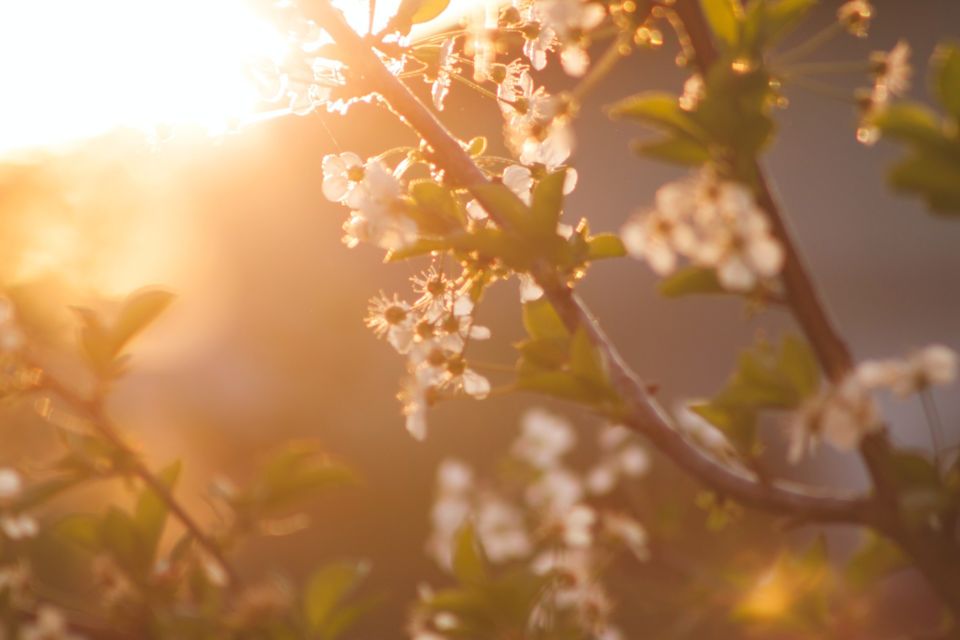
Nature sightings to look out for
Now to the detective work, here are some nature sightings to look out for in this energising time of year. Keep an eagle eye out whilst on your daily walk or run and if you’re lucky enough to have a garden then you have no excuses, get detecting and see what’s going on. Don’t forget to let us know on social media @treesforcities. We’d love to see and hear about your sightings.
This is not an exhaustive list and the timing will vary locally and yearly.
Spring woodland flowers provide a yearly spectacle in their race to bloom in the short window when it’s mild and before the tree leaves shade the sun out. They include favourites such as bluebells and lesser known wonders like Townhall clock (Adoxa moschatellina), its name referring to the four faces of its small greenish flower head. Amazingly, the UK is home to about half of the world's bluebell population.
Bud burst, blooms, and blossoms. Keep an eye out to see which trees first start to bud and produce leaves or flowers. See if you can notice the order of budding and flowering. In lockdown times you may be walking through the same areas. Instead of getting bored check out the succession of different flowers in gardens and parks and how they give way to each other like a rolling wave of varied petals. From the familiar cheeriness of daffodils to delicate tissue textured cherry blossom, to the exuberance of bright camelias and the pale lavender of climbers like wisteria that trail classically on walls and pergolas.
We particularly love the cream and delicate coral pink towers of horse chestnut tree flowers. And right now the usually unassuming hawthorn (see our Intreeducing article for more) is spectacular in full overblown bloom, swathes of frothy ivory flowers cascading down its branches.
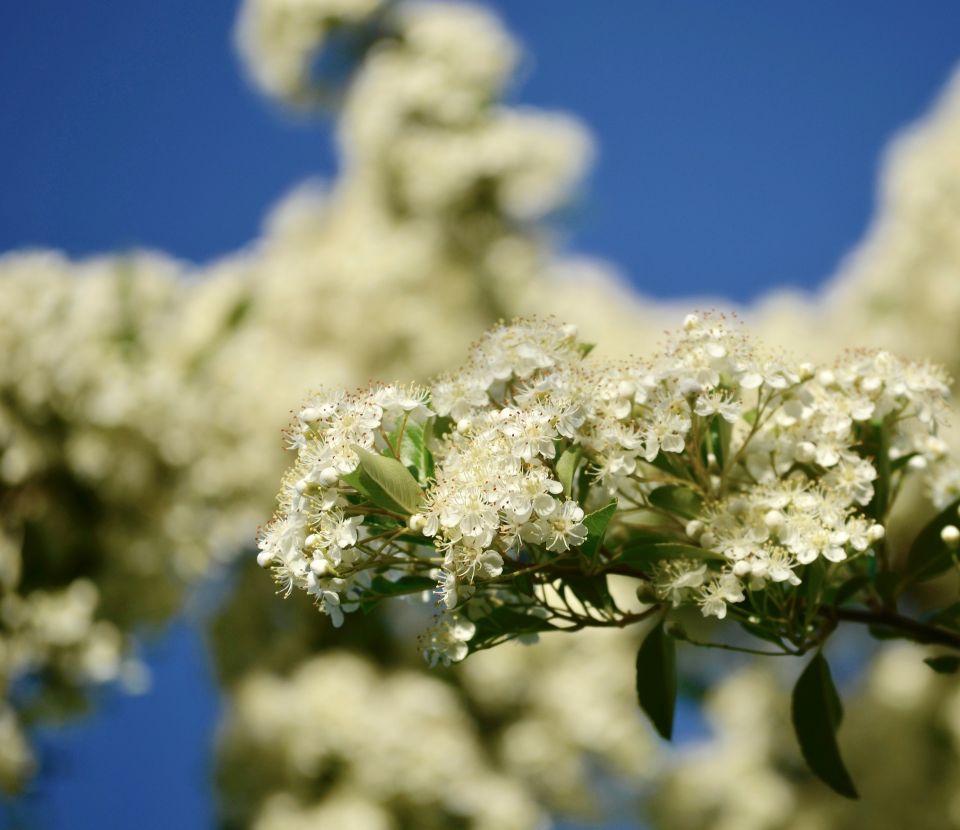
Insects. All the flowers are vitally important for the insects emerging from hibernation. Hoverflies, butterflies and hibernating bees such as bumblebees and solitary bees will come out at the first sign of warmer weather. One of our favourites is a solitary bee fabulously named as the hairy footed flower bee. Another is the Peacock butterfly one of the earliest butterflies out because they hibernate over winter and come out in spring.
Many plants rely on these insects to pollinate them and yet insect numbers have been crashing. Not only can you keep an eye out for them but plant early flowering insect friendly plants yourself to give them a boost. The sweet nectar hidden among the brightly coloured petals of early spring flowers can be a lifeline for hungry insects.
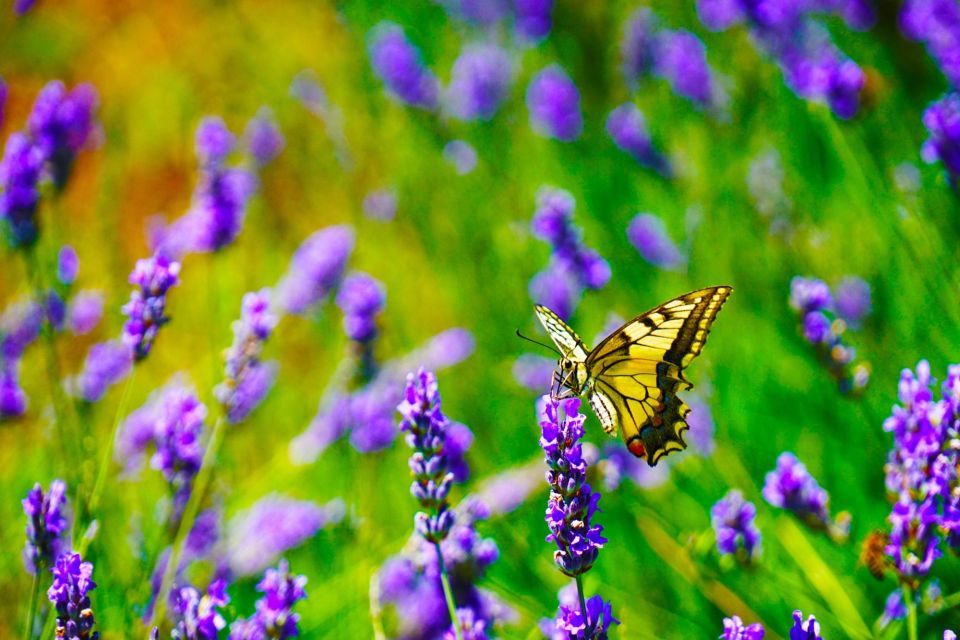
Here come the birds! Birds will be singing more and more loudly and some develop complex songs to nab a mate and keep competitors away from their patch. Now could be a great time to learn bird song to identify specific birds. A skill to charm your own potential mate or mates, ID a bird with your eyes shut. The RSPB have a comprehensive set of recordings and detailed information for birdsong.
Depending on what sort of local habitats you have there will be various birds migrating in. Around 15 million birds make their way from various parts of southern Europe and Africa to take up summer territories, find a mate and raise a family here in the UK. My favourites include house martins and swifts, supreme masters of the air, zooming through the skies effortlessly. They journey all the way from Africa. Every year my heart sings when I see them, as Richard Mabey wrote excitedly in his 2005 memoir, Nature Cure. ‘Some old romantic yell sang in me, and probably out loud too, “They’re back! The Swifts are back”’.
If you have a dog or cat that you brush, put some of their hair out in your garden and it may end up lining this year’s nests. Please don’t put out synthetic materials, even those that seem soft and cosy, as plastic fibres can be dangerous for wildlife and may end up as litter. Even without a garden you could spot a bird picking up twigs and grasses to build their various creations. If you are lucky you may even see a nest. Remember not to disturb it while it is being used.
Gardeners everywhere don’t tidy things too much; you might tidy up an energy rich insect meal or accidentally chop down a nest from a hedge. Getting to know the habits of your local birds could lead you to their nest. Some of them are works of art, beautifully woven together, others are simple heaps of twigs.
Baby animals! It’s the cutest time of the year. Yes, even if you don’t know what they are called you may see all sorts young creatures such as fluffy ducklings, bunnies or even foxes. And what better time to find out who these characters are, whether animal or plant, look up your favourites and learn their names. There are many websites and apps that can hep you with your detective work.
There’s so much going on at this time of year, send us your local nature gossip on social media, pictures or a few words of what’s brightening your day. Could be your park, garden or backyard, find that spring in your step and share it with us.
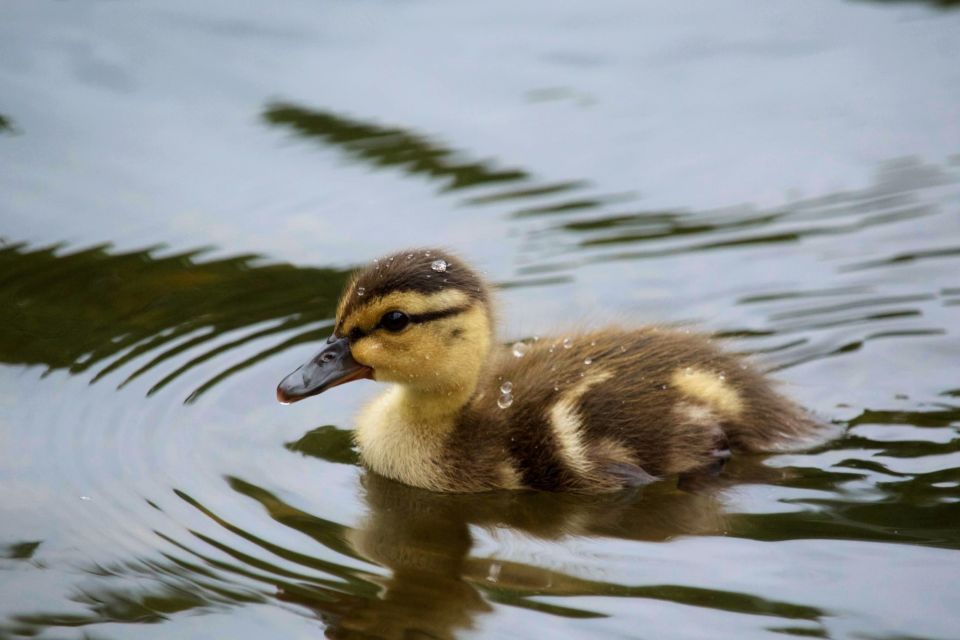
Swifts
Fifteenth of May. Cherry blossom. The swifts
Materialize at the tip of a long scream
Of needle. ‘Look! They’re back! Look!’ And they’re gone
On a steep
Controlled scream of skid
Round the house-end and away under the cherries. Gone.
Suddenly flickering in sky summit, three or four together,
Gnat-whisp frail, and hover-searching, and listening
For air-chills – are they too early? With a bowing
Power-thrust to left, then to right, then a flicker they
Tilt into a slide, a tremble for balance,
Then a lashing down disappearance
Behind elms.
They’ve made it again,
Which means the globe’s still working, the Creation’s
Still waking refreshed, our summer’s
Still all to come —
And here they are, here they are again
– From Swifts by Ted Hughes
Never before has the value of urban nature been more apparent. It is vital, therefore, that when the situation allows we can go on greening urban landscapes - and we hope you can help us get there!
Donate to Trees for Cities and together we can help cities grow into greener, cleaner and healthier places for people to live and work worldwide.
Donate